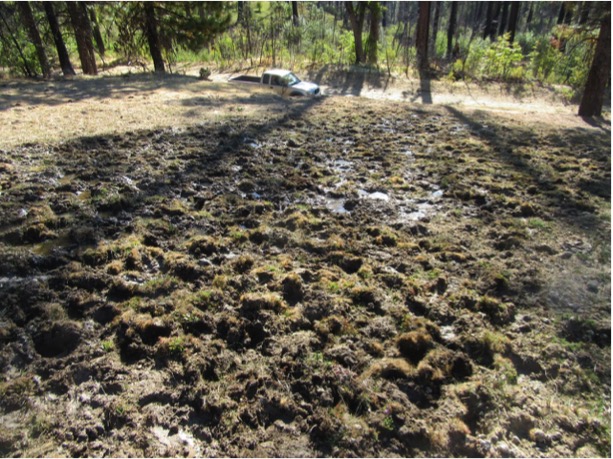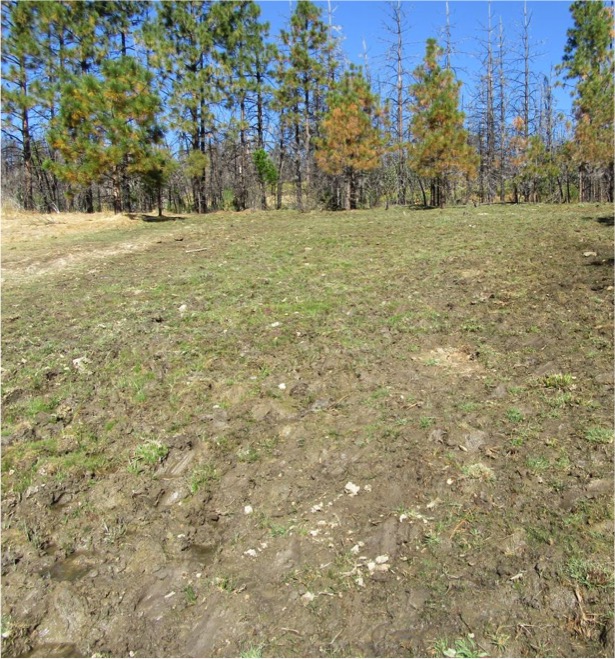Back in February CSERC filed a lawsuit against the Stanislaus Forest for failing to protect meadows, wetlands, springs, and water quality in streams. After two decades of CSERC’s field monitoring and countless discussions with agency staff, there was a complete lack of responsiveness by Forest officials. Litigation was the only strategy left.
As with many legal actions, litigation proceeds slowly, and no progress has resulted to date. Despite the Forest Service being sued for its failure to enforce its own regulations to protect resources, this recent grazing season still resulted in some of the most blatant violations yet uncovered by CSERC staff.

The especially large area of springs in the local forest (above) was trampled, pocked, overgrazed, and degraded with manure deposited across what is supposed to be a highly protected special aquatic feature.

At meadows that CSERC reported to the Forest staff as highly overgrazed (such as left), cows were still allowed to graze those degraded sites for weeks past the normal date for livestock to be removed. Even when CSERC took USFS staff to personally see pocked and over-grazed wetland sites, cows were still allowed to continue damaging the area for many weeks.
Over the long grazing season, CSERC biologist Megan Layhee led water quality sampling of local forest streams to detect where high levels of pathogenic bacteria exceeded State water quality thresholds. CSERC staff took 114 samples at 10 forest streams and had the samples tested at a certified, independent laboratory. We also took 21 samples at foothill stream sites. This program of water quality assessment was a huge amount of fieldwork by Megan, with assistance from the rest of CSERC’s staff. The lab results showed that five forest streams had violations for excessive levels of pathogenic bacteria. The presence of livestock was highly associated with the sites where stream water was significantly contaminated.

